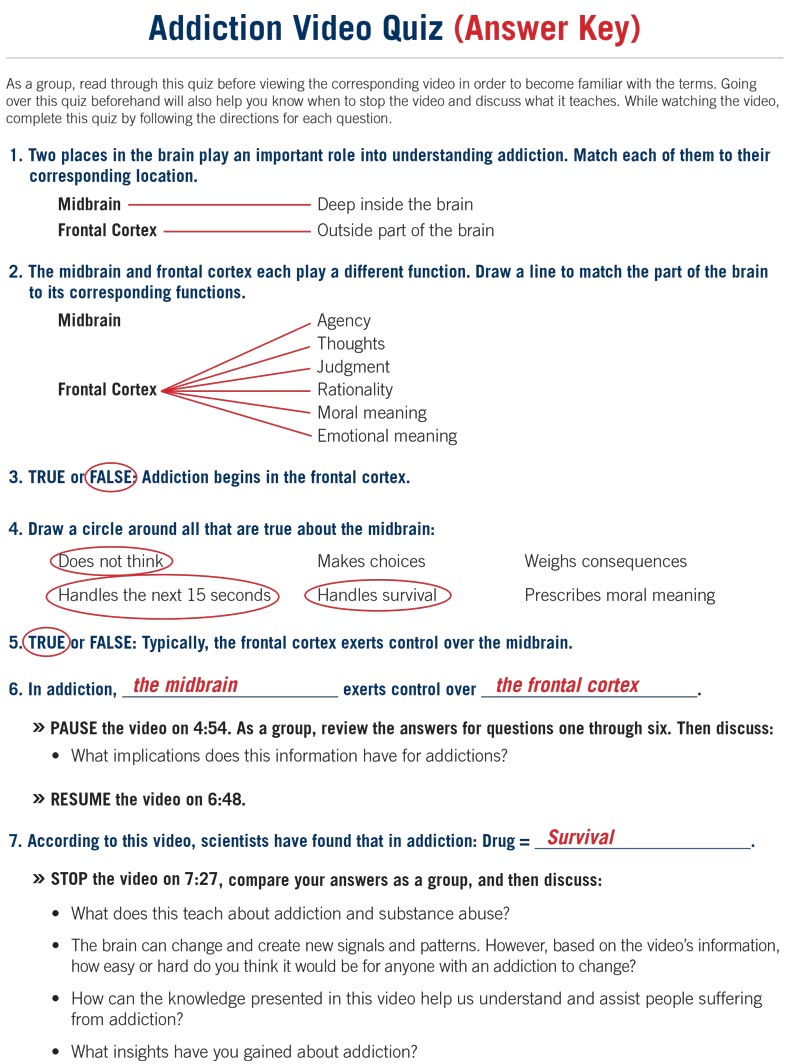Understanding Addiction
From the following list, choose and complete one or more activities that best apply to your situation.
 Activity 1
Activity 1
Many models and theories explain addiction. The video “Landscape of the Mind: Addiction Explained” (available on mormonchannel.org) focuses on one of these models and provides a unique perspective on what happens to the brain during addiction. Before watching the video, review the Addiction Video Quiz handout. Then watch the video and follow the instructions in the worksheet to complete this activity.
 Activity 2
Activity 2
Complete the true or false Possible Causes of Addiction questionnaire. If a statement is wrong, write why it is wrong and the correct answer. Once everyone has finished the questionnaire, discuss your answers with the rest of the class members. You could also discuss the following as a group:
- Did any of the statements surprise you? Explain.
- How can addiction be considered a disease? Explain.
- How does addiction differ from a disease? Explain.
- Now that you understand how addiction strongly affects the brain, why is it important for you to be patient while working with associates with addictions?
- On the other hand, remember that the brain is flexible and capable of creating new signals and patterns. How does this understanding help you develop and maintain hope as you work with an addict?
- How can you encourage your associates to feel hope as well?
- What questions do you have about addiction?
- What information would you like to know about addiction?
- What is addiction and what have you learned in this activity?
 Activity 3
Activity 3
Invite a person who has struggled with addiction to talk to you about his or her experiences. This person could talk about any of the following questions:
- How would you define addiction?
- What were your thoughts before, during, and after addictive behavior?
- How would you describe your desire to use alcohol or drugs?
- What were the consequences for engaging in addictive behavior?
- How did your addiction progress?
- Did you notice when your addiction was worsening?
- Were you able understand the consequences of your addictive behavior?
- How would you explain the power of addiction to someone who has never struggled with it?
- How much mental, physical, or spiritual effort did you have to put forth to overcome addiction? Explain.
- How were you able to find hope to overcome an addiction?
- What advice would you give to people working with addicts?
You could also ask additional questions to help you understand addiction and learn more from this person’s experiences.


